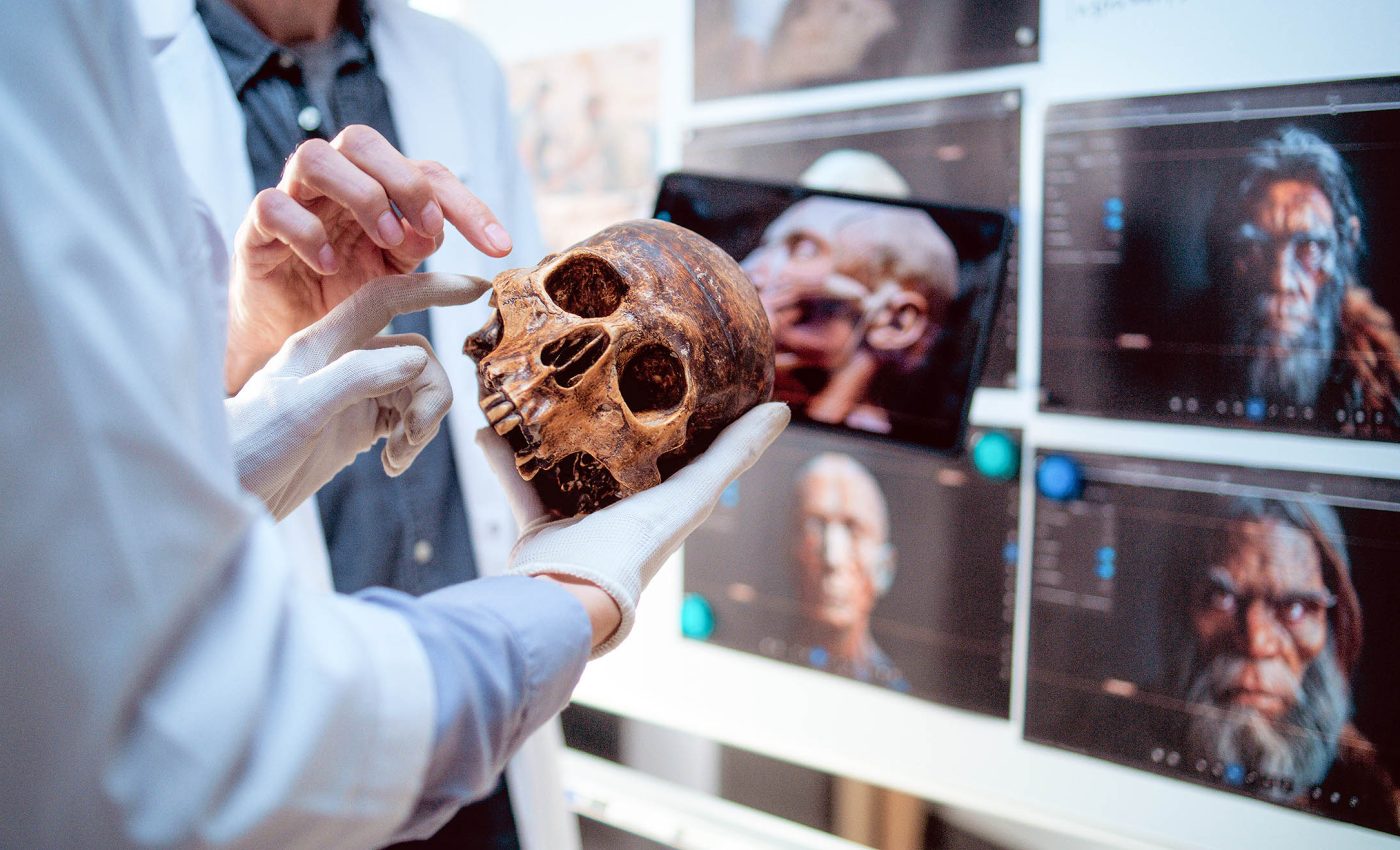
Lead exposure may have killed off the Neanderthals, but why not also humans?
For decades, scientists have known that lead is bad news for brains. It messes with brain development, lowers intelligence, and causes emotional and behavioral problems.
But no one expected to find proof of lead exposure in ancient hominids – not just in humans, but in our distant relatives and extinct cousins, too.
A new study shows that lead exposure began long before modern industries existed. And the results may help explain why modern humans thrived while others, like Neanderthals, didn’t.
Lead exposure found deep in fossils
Researchers recently examined fossilized teeth from 51 hominids found in Africa, Asia, and Europe.
The group included modern and archaic humans, extinct human ancestors like Australopithecus africanus, and long-gone apes like Gigantopithecus blacki. In 73 percent of those teeth, they found lead – and not just small traces.
Even fossils from 1.8 million years ago, like those from Gigantopithecus blacki, showed signs of acute lead exposure. That’s way earlier than anyone expected.
Until now, most people thought harmful levels of lead exposure began during ancient times when the Romans used lead pipes.
It supposedly got worse during the Industrial Revolution, and then started to improve after lead was removed from paint and gasoline in the late 1900s.
But this study flips that idea on its head. It turns out that lead was already in the picture before humans even invented metal tools.
Lead exposure from water
One clue lies in where they lived. Many early hominids relied on caves for shelter and access to water.
Caves often contain lead, and running water inside them may have carried lead particles into the mouths of the hominids living there. This exposure likely started early in life, when the brain is most sensitive.
Teeth from people born between the 1940s and 1970s – back when kids were still exposed to leaded gasoline and house paint – showed patterns of exposure very similar to those ancient fossils.
As lead levels rise in a developing brain, the damage can be serious. Intelligence takes a hit, and emotional regulation becomes harder.
That’s why these findings raised a big question: if so many ancient humans and apes were exposed to lead, how did the modern human brain still manage to evolve into something more powerful and complex?
Brain mutation made a difference
The answer may lie in one small genetic difference. A gene called NOVA1 plays a big role in brain development. It helps control how nerve cells grow, connect, and respond to damage.
Disruption in this gene is linked to several brain disorders. Most modern humans carry a version of NOVA1 that’s slightly different from the one found in Neanderthals.
The difference comes down to a single change in DNA – but it turns out that small change made a big impact.
What happens when lead meets DNA
Researchers at UC San Diego School of Medicine, working with an international team, created tiny lab-grown brain models called organoids.
They gave some organoids the modern human version of NOVA1 and others the older, Neanderthal version. Then they exposed all of them to lead to see how the gene would react.
Lead exposure affected both types, but the archaic version caused bigger problems. In particular, it altered how a critical gene called FOXP2 was expressed.
This gene is essential for speech and language. When it doesn’t work correctly, people can’t produce complex language, no matter how intelligent they are.
“These type of neurons related to complex language are susceptible to death in the archaic version of NOVA1,” said Alysson Muotri, Ph.D., professor of pediatrics and cellular & molecular medicine at UC San Diego School of Medicine.
“The FOXP2 gene is identical between us and the Neanderthals, but it’s how the gene is regulated by NOVA1 that likely contributes to language differences.”
Lead exposure and survival intertwined
This difference in how NOVA1 responds to lead could explain why modern humans developed speech and advanced communication, while Neanderthals didn’t.
Even though both species likely experienced lead exposure, only modern humans had the genetic shield that kept their language-related neurons safe.
That ability to use language gave modern humans an edge. It allowed them to build stronger communities, plan complex actions, and pass knowledge across generations.
“Language is such an important advantage, it’s transformational, it is our superpower,” said Muotri. “Because we have language, we are able to organize society and exchange ideas, allowing us to coordinate large movements.”
“There is no evidence that Neanderthals could do that. They might have had abstract thinking, but they could not translate that to each other.”
Muotri believes lead exposure may have played a role in why Neanderthals disappeared about 40,000 years ago. Without the protection of the modern NOVA1 gene variant, their brains may have been more vulnerable.
Lessons from ancient lead exposure
This study doesn’t just explain the past – it also gives insight into current neurological issues.
Understanding how NOVA1 affects FOXP2 helps scientists learn more about speech apraxia and autism, conditions where communication is impaired.
It shows that even small genetic differences can change how the brain reacts to environmental stress.
The discovery also challenges long-held beliefs about when humans started dealing with heavy metal contamination.
It turns out we’ve been exposed for millions of years. The difference is, modern humans evolved with a defense system – one that helped unlock the ability to speak, connect, and survive.
The full study was published in the journal Science Advances.
—–
Like what you read? Subscribe to our newsletter for engaging articles, exclusive content, and the latest updates.
Check us out on EarthSnap, a free app brought to you by Eric Ralls and Earth.com.
—–













